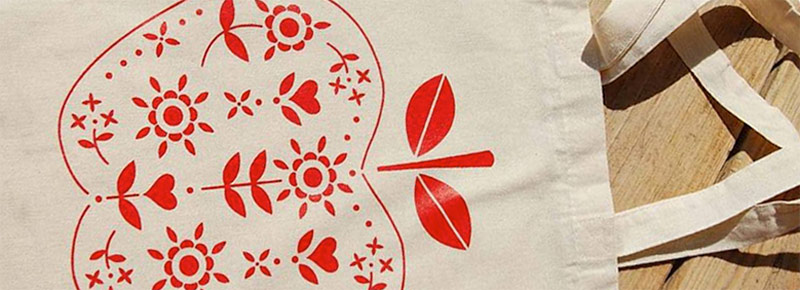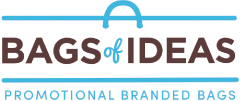Alternatives to printing promotional bags
Posted on March 22, 2016 at 12:30 PM

Engraving
Certainly not really something that you’d think was appropriate for bags. It’s more often used on metal pens, or glassware and awards but the opportunities might surprise you.The Method
Similar to direct-to-garment, laser engraving is computerised. The artwork is set up one the computer, the product placed in the jig, and the machine does the rest. It’s a fairly straightforward method, and depending on the complexity and size of the logo, it can be very quick. And because, the process is computerized the standard of work and quality control is excellent. The video below gives you an idea of the process and while features a pen – not a bag – the principal is very similar.Why Engraving
It’s simply a great alternative to printing if you are looking for something a little different. And even with promotional bags there are opportunities to engrave products you may not have known about. Engraving’s one big advantage of course is i great advantage to engraving is that it lasts – there is no ink involved, no transfer – it is simply a mark made on the product that cannot be scratched off, or fade. No other method offers such longevity. While printing a large logo can sometimes look a little over the top, engraving often provides a more subtle, understated finish. For example, a top of the range laptop bag used by your sales team on a daily basis; an engraving on a metal tag or plate will give a more professional look when meeting clients than a full colour transfer. And engraving also is not limited to metal . Laser engraving means you can decorate fabrics such as fleece, cotton, felt, leather and jute to give a unique effect. Essentially the laser “burns” the fabric in a precise way to create a darkened patch which forms the design or logo – see the picture and video below for reference.


Unlike printing, laser engraving allows for very detailed designs to be created in the smallest of spaces. One small discrete metal emblem could stylishly show off your logo, without the risk of ink filling. This also means you can subtlety place your logo on additional areas, such as a zip, or a button, where it’s impossible to print the simplest design.
Engraving also doesn’t have to be colourless; we can colour fill etchings with Pantone to your specification – giving the best of both worlds. Have a look at the image below to get an understanding:
Smaller quantities and pre-production samples (PPS) can be done much more quickly and cost effectively since setup costs are not generally charged for engraving and the process is not as time consuming as a screen print.
One possible drawback to engraving on metal is not knowing what is underneath the surface For example, you might have a silver tag which, when engraved, reveals a possibly unattractive brassy tone below. In some cases this might be undesirable, so you should be aware. Always get a PPS prior to bulk production.
There are also variations in the finish from machine to machine; some lasers react differently with the surface of the metals, which can create different coloured engravings, from subtle grey, to black. So again, always get a sample so you can see the result before you commit to bulk production.
r a halogen light. The heat of the halogen hardens the emulsion, and burns the logo.
The screen is then washed to reveal the logo – this part of the film has become thin enough to allow the ink to pass through.
Now you are good to go – the screens are placed in the machine, colours mixed, and the printing can begin.
The logo is printed by using a squeegee; this runs along the screen, pushing the ink through then onto the bag underneath.


Finally, you are of course limited by the bag itself: some designs come with metal plates ready for engraving, but paper gift bags and plastic bags are not an option at all. Some fabrics may also be too light to laser engrave, including the eco friendly 5oz cotton totes, as the material may burn through.
Embroidery
Embroidery is a great option for promotional bag branding, and can really add a touch of class and professionalism to your campaign.
The Method
Embroidery, similar to engraving and DTG requires digital setup, and quite a complicated one too. The process – called digitization – turns your logo into a format that the embroidery machine can understand, and the design is created stitch by stitch. The images below show how a digitized logo compares to the original logo, and the finished result:

Once the digitisation is done, the product is loaded into the jig as the image below shows.

Many embroiderers have large machines with many heads, like this six-headed beast below.

And this one has 42!

Why Embroider
Having a bag embroidered is not normally out of necessity – more aesthetical preference. Certain types of bag that look better with embroidery too depending on the material.
Embroidery offers a more upmarket style of branding than printing. On more expensive items, it often increases the perceived value, so as a corporate gift, or as a sales tool, embroidered promotional bags add an extra touch of class.
And it’s quite a durable branding option too. Because the colour is in the thread, there is no ink involved, which means that fading over time due to washing and sun exposure never becomes an issue.
Another real benefit is that the colours involved in your logo do not affect the price. If you have one colour, or ten colours, the price is the same because there is no extra work invloved. By contrast, screen-printing requires one screen per colour – 10 colours means 10 screens must be created. For embroidery, the digital setup is done at once.
On top of this, you also benefit from short lead times; looking at the image below, each head holds one thread colour, so the logo can be created in one go, rather than having to switch printing heads for each colour (like screen printing). A factory with a large number of embroidery heads can all be working at once, with just one setup file, doing the same design – which means your bags arrive sooner!

Once digitisation is complete, it can be easily replicated, stored as a file on a computer. A printing screen is a physical object, which takes up space, hence manufacturers are reluctant to store masses of them. This brings savings in the long run. It‘s also easy to make amendments to the design, such as a new phone number, whereas a screen would have to be remade even for the smallest change.
But embroidery is not all plain sailing, there are drawbacks too
The first and maybe the obvious limitation with embroidery is that (of course) the product has to be made from a fabric. And solid cases, trolley bags etc. cannot be embroidered.
It’s also advisable that you only embroider products with tightly woven fabric, otherwise the stitching can pull on the material.
The down side of digitisation is that the initial process can take some time, and might be costly depending on the complexity. Price is normally worked on a per-thousand-stitch basis, and will vary from factory to factory. For a complex logo the set-up cost can be a lot steeper than screen-printing. Though do remember, once it s done, its done.
As with the setup, the actual cost per logo will increase per 1000 stitches. Average stitch count in our industry is around 7000 stitches, and this would cover a logo on a polo shirt, left or right breast. The bigger you go, the more stitches involved, and the higher the cost. This is purely down to material use of the thread. In some cases a big embroidery may cost more than the product it’s applied to so if you are spending an increased amount on branding, its best to have a product to suit.
There can also be issues with the digitisation; sometimes the embroidery may have imperfections. This is a solvable issue, though can take some time as the results will not be known until the embroidery is done. For this reason always insist upon a swatch for approval. This will be a small piece of material with the logo on; only once you are happy with this, should you give the go ahead for bulk production. This process could take a while – days – so factor this in when calculating a lead-time.
By the very nature of using coloured threads, embroidery works best with spot colour designs. So if you have a full colour image, and choose to embroider, the simplest option is to convert the design into a version without gradients. There are threads that can be used which give the effect of colour changes, but the results are questionable. There are also techniques that can be used to give the gradient effect by intertwining various colours, as seen in the three images below show. They work well, but dramatically increase the stitch count and thus costs.



There is also a risk of intricate details being lost. Therefore a simpler version of your design may be necessary to produce a better result.
Like engraving, there are some bags that cannot be embroidered but this time it’s not due to the material, but the design. Because the logo is sewn through the bag, access is required because the needle must go back and forth through the material. This means there needs to be sufficient space inside to get the jig in place, and also have no other part of the bag behind it. In some cases for this reason embroidery may be impossible.
Sometimes the results can be that a pocket may have to be sewn closed – if the pocket isn’t large enough to get the jig in, it would have to go behind the pocket, so the needle would go through both the front layer and pocket layer of the bag.
The company logo or design could be moved to a place that does not cause this issue, but it may no be ideal, so always ask for advice on a product before you commit, to make sure you can get the desired result.
The tote bag below is an example of an easy product to embroider, the laptop bag pocket could be more tricky:


As with digital printing, Pantone matching cannot be guaranteed. The process of colour matching entails finding the closest thread match to the Pantone colour. The range of thread colours is huge, and there is always something very close, but be prepared for slight variations.
There is a time and product available for everyone – but if these blogs have left you more confused get in touch; as a company we pride ourselves in knowledge and we will be able to advise what is best for your promotional campaign.
